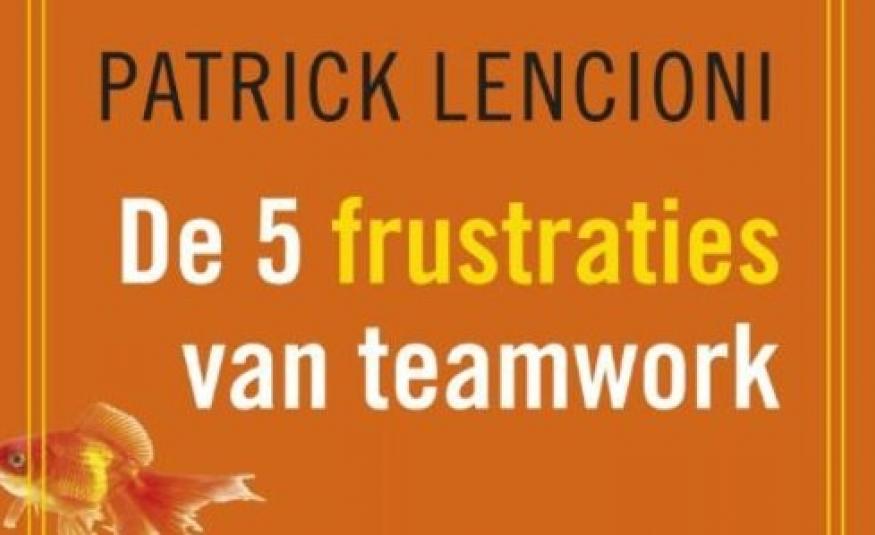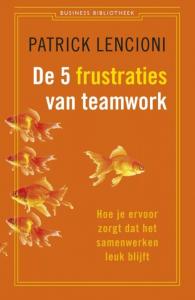In his book, The Five Dysfunctions of a Team, Patrick Lencioni describes a pyramid of five layers that represents the maturity of teamwork. The layers are connected in a way that a team can move from the bottom to the top, and becomes more effective while doing so. This article describes each of the frustrations that can be linked to these layers: lack of trust (1), fear of conflict (2), lack of commitment (3), avoidance responsibility (4) and inattention to results (5).
First, let us start with a brief overview of THE FIVE DISFUNCTIONS OF A TEAM in more detail.
At the basis of the pyramid, we find the lack of trust between team members. This lack of trust can restrain team members from opening up in the group, for instance about mistakes that were made or weaknesses that they might see in themselves.
When people do not talk about these things, it is difficult to have proper discussions in the team. The next level of maturity is about the fear of conflict, where people not only open up to each other, but are open to discuss the content. A little conflict is necessary to have energetic discussions that lead to progress.
This fear of conflict then leads to a lack of commitment. When team members are not open with each other and their opinion is not taken into account in the discussion, the change that they feel committed tot the outcome of the discussion is relatively small.
It is only the natural result, that when people do not feel committed to the outcome of a discussion they feel less responsible for the results.
The top of the pyramid represents the inattention to results, which is again the natural result of team members not feeling responsible for the actions decided in the team meeting. Instead of focusing on team results, these team members focus on personal ego and career development, maybe even at the cost of the group.
To PREVENT THESE FRUSTRATIONS from happening, we have to start again at the bottom of the pyramid.
You will have to start with creating trust between colleagues. You can do this by planning team events in which team members get to know each other personally, so they can have more insight and respect for each other’s character. It is important to take the time to exchange experience to be able to do that. Besides that, the easiest way to get somebody else to trust you is to be authentic. Always do what you say you will do and people will know you are a reliable person.
The second frustration, fear of conflict, partly solved when people trust each other. To really break through this dysfunction however, it is necessary that all team members understand the conflict can be good and productive. In another book by Lencioni’s hand, Death By Meeting (click for summary), this topic is described in more detail. It is important that people are warm towards each other and provide the opportunity for each other to be critical, because without these critical notes, discussions are usually boring and lead to actions that mean little to the team members.
This brings us to the third frustration: commitment of the team members, which only exists when they had the chance to formulate their opinion, which is only done comfortably when there is a warm environment.
When people trust each other, have open discussions and feed committed by the outcome of the discussions, people also tend to let other people talk to them about their responsibilities. Of course, you can only talk to another person about his responsibilities, when you are credible enough yourself about your own commitments (see step 1: create trust).
Finally, Lencioni describes the importance of rewarding team members for behavior that leads to improving team results. You should celebrate successes in your team and discuss what is most important for the organization as a whole, and what the most important challenges are for your team. This helps every team member in difficult situations to choose the company goals over their personal ones.
The power of this pyramid is that all these critical problems that hold back team performance can be brought back to the first element: trust. Trust that people will do what they promised, trust that people do their best for the company they work for, trust that people will use their own experience and knowledge in cooperation with his colleagues, and trust that he will be comfortable enough to share his vision with his team.
This book is written as a small novel, which makes it accessible for a broader audience. People who generally do not like to read management books, will love this way of writing.
Continue to:
The Leader´s Handbook - P.R.Scholtes (summary)
Lencioni, P., 2002, The Five Dysfunctions of a Team, San Fransisco: Jossee-Bass (order this book)















